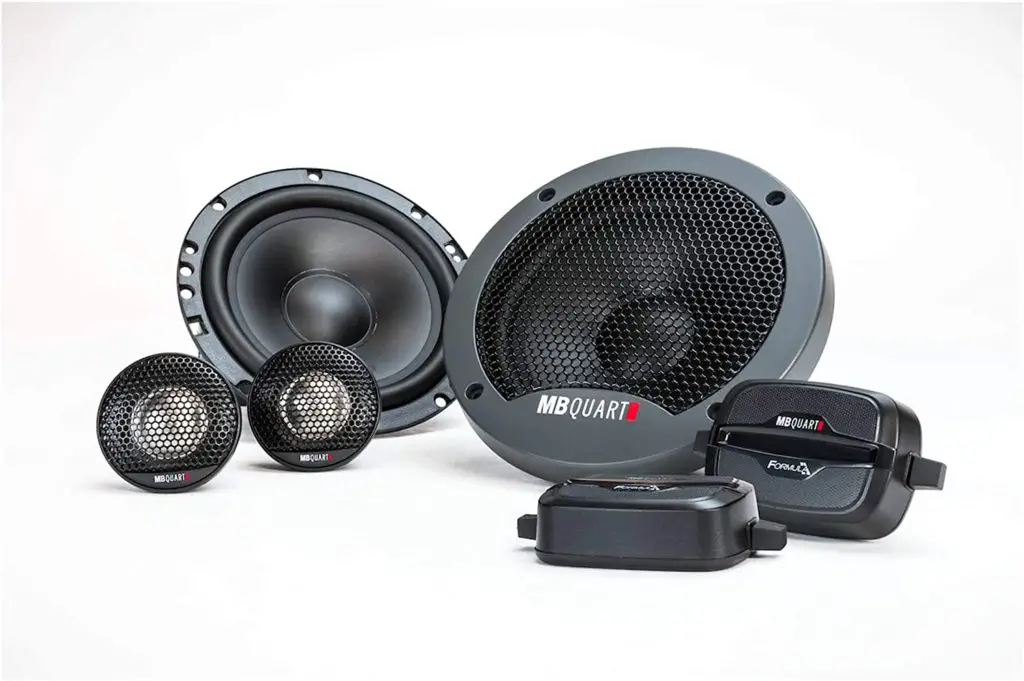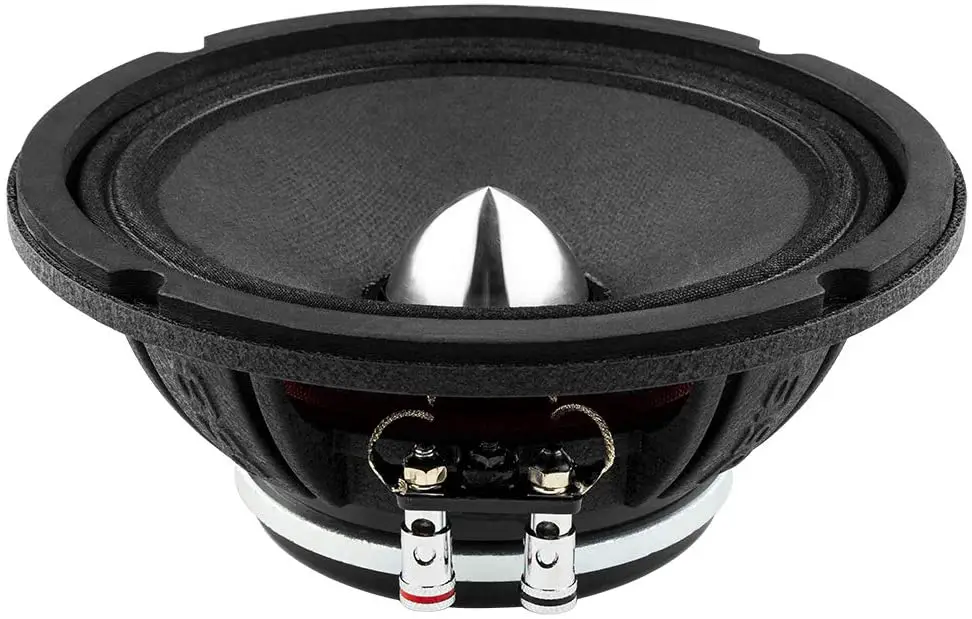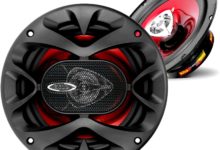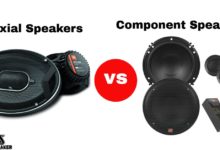Component speakers without amplifiers are a great choice for those looking to save money while using their existing home theater system. Here’s how they work and why you might want one.
Component speakers are considered the unofficial powerhouses of car audio systems, this is as a result of the sort of power they command and their impeccable sound performance.
However, individuals wonder if component speakers can be used without amplifiers, well we are part of those “individuals” that is why we decided to carry this research and penned down this meticulous article to clear the air on this.
However, before we proceed to answer the question which is “can component speakers function without amplifiers?” let us get familiar with what component speakers are.
The reason for this formal familiarity is to give those who do know what component speakers are an insight. And if you already know what it is, then stay with us as you may learn a thing or two you never knew in this article.
Table of Contents
- 1 Component Speakers Without Amplifiers
- 2 What Are Component Car Speakers?
- 3 The Parts Of The Component Speakers That Make The Magic
- 4 Component Speakers: How Do They Work?
- 5 The Pros And Cons Of Component Speakers
- 6 Can Component Speakers Be Used Without Amplifiers?
- 7 Why Do Component Speakers Need An Amp?
Component Speakers Without Amplifiers
What Are Component Car Speakers?
Component car speakers are built with the intention to deliver impeccable sound performance. Manufacturers of this car speaker type are often revered in the audio manufacturing industry.
All component speakers come with mid-bass drivers and tweeters that an integrated with a frequency range limiting crossover. The crossover aids each speaker in the set produce impeccable sound.
The Parts Of The Component Speakers That Make The Magic
In the definition of component speakers, I mentioned that these audio powerhouses are manufactured with tweeters, crossovers, and mid-bass drivers. Well, let us take a look at how these “components” add to or make up its magic rather. Yes, the pun was intended.
Tweeters
If the tweeter of a speaker were to be a musician, it would be Michael Jackson. You probably have a perplexed look on your face as to why I have made such an analogy, yeah don’t worry about that. Stay with me here.
Tweeters are in charge of delivering high frequencies, they ensure the vocals, cymbals, percussion, and everything that is related to high pitched sounds come out impeccably.
I am pretty sure by now you understand the “Michael Jackson” analogy as Michael Jackson usually hits high notes in his music. RIP Michael Jackson
With this knowledge, during installation, you should position these speakers close to your listening area to fully enjoy the audio. You should also place the woofers close to them so that the vocals and the bass can get to your ears at the same time.
Mid-Bass And Mid-Range Drivers
Like I mentioned in the last subheader, you should place your woofers close to your ear. Place them at the door, that is the factory setting so just follow it, this is because the woofers are in charge of delivering low frequencies and you must ensure they blend with the tweeters to deliver impeccable sound performance. Yes, the woofer houses the Mid-Range and Mid-Bass Drivers.
The Crossovers
The crossover can be likened to the “head of operations” in a component speaker. They ensure that the appropriate sound frequency goes to where it is supposed to.
What this means is that they analyze sound and direct high frequencies to the tweeter and low frequencies go to, yeah you guessed it, they go to the woofers. Because of the function of the crossovers, it makes it easy to position. You can place them wherever you want.
Component Speakers: How Do They Work?
Yes, we have sort of talked about this throughout this article, but it is time to really get into how all the aforementioned “components’ work together to make the component speaker proficient. Basically, the work is done by the crossover as it offers balance to the system.
It helps balance the sound and ensure that you get impeccable audio performance, so whenever you drive through those streets and bop your head to that music, always remember that you can only do that because the crossover is perfectly blending the tweeters with the woofers.
In order to appreciate the functionality of the component speakers, you should know about the coaxial speakers and how they work. Coaxial speakers combine the tweeters, midrange, and crossover into one single sound system, that sounds convenient, right?
Well, it seems so until you have to consider the fact that they all have to function in one spot and can compromise the longevity of the sound system. Oh, and yes it usually does as the coaxial speakers do not last as long as the component speakers.
Components speakers on the other hand are marketed as a set with different parts. These different parts are installed in different parts of your car. And they can be done at your convenience and discretion.
This means that you can determine how your music gets to your hearing. If you prefer the bass behind while you want the high frequencies in front of you then it shall be so. With the coaxial, however, you have everything in the same place.
However, if you need thumping and throbbing sounds while you drive then you must get a subwoofer with your component speaker set.
That is another perk that comes with the fact that the component speaker is sold in sets, whereas with the coaxial speakers you can only use what they came with.
The Pros And Cons Of Component Speakers
With all its impeccable features and certain performances, just like anything the component speaker is far from perfect as it has it’s advantages and disadvantages. Let us take a look at some of them.
Can Component Speakers Be Used Without Amplifiers?
Now that you have learned all you need to about component speakers, it is time to address the Elephant in the room. Can you use component speakers without amplifiers? The answer is yes, they can be used without amplifiers.
Component speaker sets are quite pricey and may dent your account balance if you intend to get an amplifier with it. The speakers will still function without amps so you do not have to bother about that extra cash, but you should know that the sound performance will not be as impeccable.
Why Do Component Speakers Need An Amp?
Now that we have established the fact that component speakers can be used without an amplifier, let us take a look at why amplifiers are so important in the first place.
Speakers have no internal amplification which means that for them to be able to deliver impeccable sound performance, they need to be boosted audio signals to upgrade their sound performance.
Speakers are different and so is their power, the power of a speaker determines the power of the amplifier.
Some speakers like subwoofers are manufactured with amplifiers to help with the sound performance. However, an AC connection is required to mix it up with the signal input.
These AC connection has become wildly popular because several sound systems have LFE (low-frequency effects).
Conclusively, component speakers do not have the appropriate capacity to deliver a strong audio signal to drive the speakers to move ample air for impeccable sound levels.
I have mentioned this before where I stated that the component speakers can and will function without the addition of an amplifier but the sound performance will be below par.
You may not mind or be bothered about this if you are not crazy about sound performance, yes we have individuals that do not really lose sleep about the strength of their car speaker bass, if you fall into that category, then that is fine.





